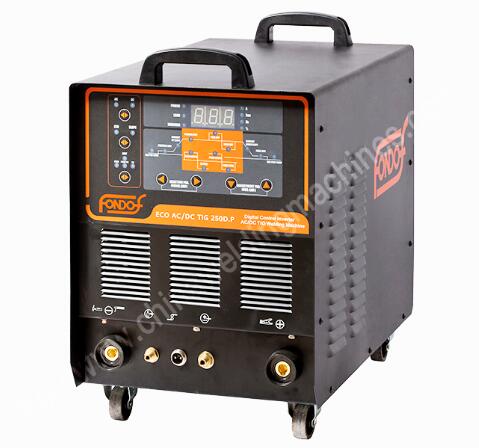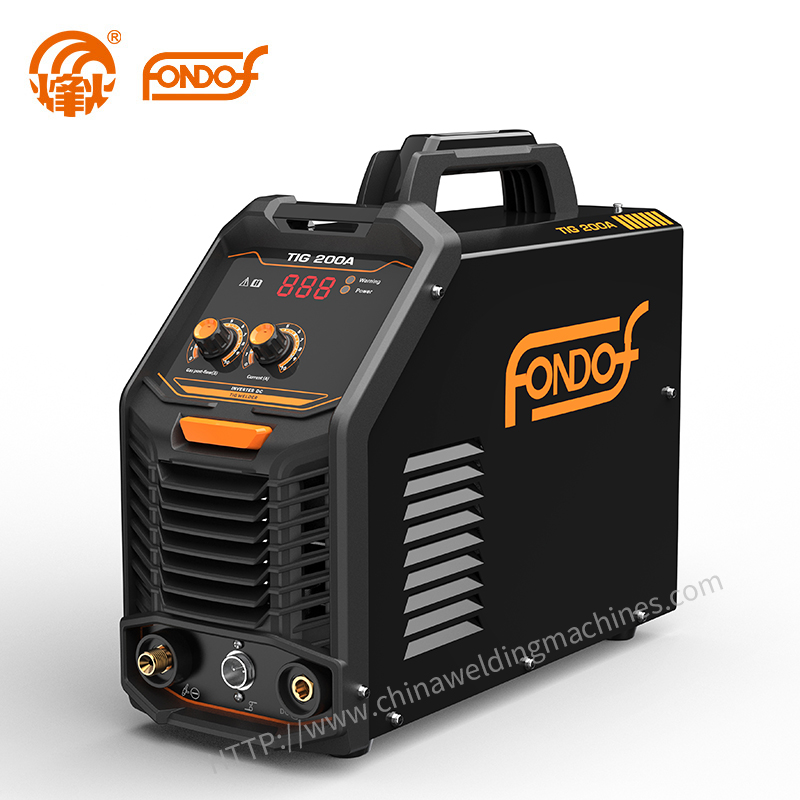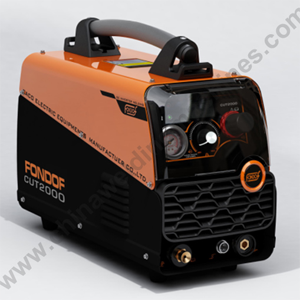Is TIG welding AC or DC?
 Oct. 12, 2022
Oct. 12, 2022
When you start TIG welding, the first major setting you have to set up is the current. Using AC or DC has a hugh impact on your weld results. In this article I will give you a best practice guideline that should help you make the right choice for your welding tasks in the future.
TIG welding can be done with both, alternating current (AC) or direct current (DC). The type of current to choose depends on the workpiece material. Generally, Steel would be welded with DC and Aluminium with AC.
In the following sections, I will get into a more detailed answer, which should enable you to make the right choice with ease, the next time you have to pick a type of current for your weld job.
AC, DC, whats the difference?
In case you are not familiar with the terms AC and DC yet, they describe the way electricity is flowing. Electricity is a stream of electrons, comparable with water in a river. In this example, a river would be a direct current power source. Water is only flowing downstream and does not constantly change the direction of flow. Examples of DC power sources would be batteries for example. They release a constant stream of electrons in one direction until drained.
Alternating current on the other hand would be more like the tide, moving in and going out. But in the case of electricity a million times faster. Examples for everyday AC power sources would be your wall plug. You might ask yourself now why going through the trouble of switching direction of travel for electrons a couple of thousand times per second? There are deeper underlying physical laws behind this, but the main takeaway for this article is that electricity can be transported with less resistance and therefore less losses. AC can be transformed back into DC, that is basically what is happening when you switch the welding plant to DC, even though your wall plug provides AC coming from your regional power plant.

Why AC is probably the right choice when welding Aluminium
Aluminum is a tricky one. It looks shiny, but looks can be deceiving! When you try to join two pieces of Aluminium together, you are more likely to weld Aluminium with a splash of Aluminium oxide. Aluminum oxide is a ceramic, does not melt at the 660°C Aluminium does, it melts around 2000°C! That this will cause trouble is probably easy to spot. With a three times higher melting point, Aluminium oxide laughs at the temperature you are applying with your TIG torch. The result is a poor, unclean weld with a lot of oxides (very much unwanted in welding!). Increasing the temperature would not work either, because then the Aluminium will just evaporate, leaving you with a hole in the workpiece you were meant to join together.
So when welding with direct current (DC), you only have the option between either melting or cleaning. And since you probably not fast enough to change the polarity a couple of thousand times every second, you won’t get the benefit of both without the downsides.
Enter AC! AC takes over the switching from electron negative to electron positive by default. So you have cleaning and melting in one operation. The balance between these two phases might be adjusted if more cleaning (EP) or a deeper penetration is necessary (EN).
What is the effect of AC and DC in arc welding?
Arc welding uses a welding power supply to create an electric arc between an electrode and the base material to melt the metals at the welding point. They can use either direct (DC) or alternating (AC) current, and consumable or non-consumable electrodes. The welding region is sometimes protected by some type of inert or semi-inert gas, known as a shielding gas, and/or an evaporating filler material. The process of arc welding is widely used because of its low capital and running costs. To supply the electrical energy necessary for arc welding processes, a number of different power supplies can be used. The most common classification is constant current power supplies and constant voltage power supplies. In arc welding, the voltage is directly related to the length of the arc, and the current is related to the amount of heat input. Constant current power supplies are most often used for manual welding processes such as gas tungsten arc welding and shielded metal arc welding, because they maintain a relatively constant current even as the voltage varies. This is important because, in manual welding, it can be difficult to hold the electrode perfectly steady, and as a result, the arc length and thus voltage tend to fluctuate. Constant voltage power supplies hold the voltage constant and vary the current, and as a result, are most often used for automated welding processes such as gas metal arc welding, flux cored arc welding and submerged arc welding. In these processes, arc length is kept constant, since any fluctuation in the distance between the wire and the base material is quickly rectified by a large change in current. For example, if the wire and the base material get too close, the current will rapidly increase, which in turn causes the heat to increase and the tip of the wire to melt, returning it to its original separation distance.The direction of current used in arc welding also plays an important role in welding. Consumable electrode processes such as shielded metal arc welding and gas metal arc welding generally use direct current, but the electrode can be charged either positively or negatively. In welding, the positively charged anode will have a greater heat concentration and, as a result, changing the polarity of the electrode has an impact on weld properties. If the electrode is positively charged, it will melt more quickly, increasing weld penetration and welding speed. Alternatively, a negatively charged electrode results in more shallow welds. Non-consumable electrode processes, such as gas tungsten arc welding, can use either type of direct current, as well as alternating current. With direct current, however, because the electrode only creates the arc and does not provide filler material, a positively charged electrode causes shallow welds, while a negatively charged electrode makes deeper welds. Alternating current rapidly moves between these two, resulting in medium-penetration welds. One disadvantage of AC, the fact that the arc must be re-ignited after every zero crossing, has been addressed with the invention of special power units that produce a square wave pattern instead of the normal sine wave, eliminating low-voltage time after the zero crossings and minimizing the effects of the problem.
I hope this article will help you to confidently choose and adjust your current type in the future. Be aware that I can give only general guidelines, and a proper weld is depending on a multitude of things.




























